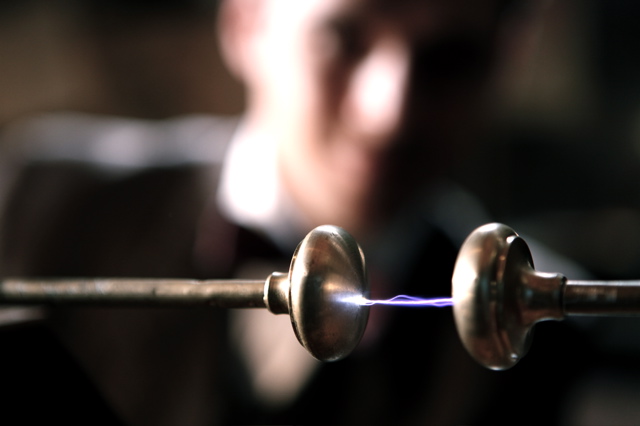.: propagation part
1
Theoretically, the strongest DX signals arrive and depart our antennas
at low
angles,
typically, between 2 and 8 degrees. The reason
for this is that the closer the signal is to the horizon
when it leaves the antenna, the less ground-to-ionosphere
hops it has to make. Remember, each time the signal hops, it
looses energy to the ionosphere and the Earth. This absorption
varies with frequency, terrain continuity and D-layer
absorption (daylight paths) to name a few.
It's difficult to get the main-lobe of
an antenna to radiate as low as 2 degrees on HF, but
luckily for us, even relatively low antennas transmit and hear
a significant amount of RF energy at those low angles.
How much energy depends on antenna height and surrounding
terrain. The closer we can get the main-lobe of our antennas (where
the gain is) to "scoop-up" these low-angle signals,
the better the Dx performance.
Now that we've got that out of the way
- your G5RV at 40 feet would have its main-lobe
at approximately 25 degrees elevation at 14Mhz. At 5
degree angles, the gain of the main-lobe has dropped-off
considerably (about -10db). Below 5 degrees, the antenna is still
hearing Dx, but with diminishing signal
strength.
You could set the minimum radiation
angle parameter higher to reflect this, but, by doing this,
your telling the software that your antenna is "deaf" when
signals arrive at these angles which isn't the case - the
antennas hearing is weak, but not
deaf!
The best approach is to expect lower Dx
signal strengths for lower antennas, but leave the
factory default at 1.5 degrees so you don't miss an
opportunity to work any DX path. When all is said and done, there
are ALOT of tall-tower and multi-element DX stations on the air and
there is always the opportunity to work Dx, and plenty of it,
with the other guys station doing most of the work!
|
|
.: propagation part 2
The "above average" HF station
can radiate
enough low-angle signal to make-up for where
your antenna is lacking. He may be running a 5
element Yagi on 20 meters at 75 feet which would certainly
out-perform a low dipole or vertical from the same QTH. If
you cut-off the signals arriving at angles lower than 5
degrees, the software will indicate that the opening to say
"Big-Gun Sam in
Japan" would not
take place : ) You know this would be false because your log-book
has
plenty of Dx in
it!
On the other hand, with 40 and
80 meters it
would make allot of sense to up the
minimum radiation angle for Dx signals because the main-lobe
take-off angle, at those frequencies, would be 45 degrees and
above with a low antenna. The software's predicted signal
strengths would give better real-world figures when the
minimum radiation angle is at a more realistic 20 degrees on 80
and 10 on 40 meters.
The W6EL
software predicts HF path openings and signal strengths based on
resonant dipoles in free-space, not above ground. So, these
antennas would hear signals at 0 degrees just as well as they
would at 90 degrees. In other words, with the software's
imaginary dipole antenna, all take-off angles are covered
with the classic 2dbi gain and the lack of influence from
the ground so there's no way to manipulate the
antennas take-off angle. In the real world, things are different
- height does matter (sounds like another saying but
we
won't go there
).
One more thing -
the ionospheric model used in HF propagation software is statistical
in nature. It
uses the average sunspot numbers or 10cm flux to
predict what USUALLY happens at HF frequencies for
a specific time of year at a specific time of day. It
can't account for chordal hops, (strong HF signals that skirt
the ionosphere without refracting back to earth for
long distances) & ionospheric anomalies, (equatorial
bulge) enhanced ionospheric density due to a sudden burst of
solar energy which increases the maximum usable frequency,
and
so
on.
With that said,
the software's predicted band openings and relative signal
strengths are surprisingly accurate in most
cases. |





